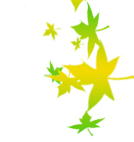The Cave of Bats (St. Gregory the Decapolite)
The cave is located on the right slope of the Bistriţa Gorge, at 630 m absolute altitude and 80 m relative altitude; it’s very easily accessible, due to the trail that ascends to the entrance starting round the back of the Bistriţa Monastery (15 minutes). It does not require any special equipment, except for a source of light, as it is only partly illuminated. (C. Goran, 1983)
The cave is mentioned for the first time in the scientific research articles of Emil Racoviţă, in 1929, and in 1951 and 1955 other researchers conducted biospeoleontological studies.
Carved by the Bistriţa river, the cave has three access points, towards east, but only the southern is opened to public access. It is 400 m wide and has 15 m negative amplitude. The narrow entrance leads into a small, low and very ventilated gallery, that gets wider, another 15 m further.
From that point, you can go right, pass over a suspended block of stone, onto the upper level, that formed of a short gallery and finished in a small room.
If you go on straight ahead, after going down on a ladder, you’ll get to the lower level. There is a large gallery on this level, and it continues over to the left, in descent. On the wall on the left, there is a small church (Ovidenia), partly built in bricks, partly carved in the stone, from the XVII-th century, and used as a hiding place to keep the treasures of the monastery and the remains of St. Gregory the Decapollite in safety, when danger struck. (C. Goran, 1983)
The gallery continues in descent, to the right (making 180° turn), passes through a high room, where there is a colony of numerous bats, and after it gets separated in three segments on a short distance, it gets to the wide opening of the cave. From the bottom of the ladder, where the cave separates in several roads, you can climb down on another ladder to the right, getting to the same wide opening, as the lower level is circle-shaped.
Across the wide opening, there is a church (the Saint Archangels), founded by two monks: Macarie and Daniil, in 1635. From the ladder, following the gallery on the right, in slight ascent, you get to the middle level, where there’s a lineary gallery, wide and high at first, but narrowing and lowering as you proceed to the west, ending with two naturally carved holes in the stone which gather the water that glides down on the cave’s walls.
The cave is poor in concretionary formations. Because of its many openings, the cave is very dynamic, as it is well ventilated all throughout the year, and thus the temperature variations amplitude is higher, reaching, for instance, 16.5° C, in the Bats’ Hall (on winter, the average is 2,5° C; on summer, it reaches 14° C). A bit stamper and with a more constant temperature (from 10 to 13° C) there are the two galleries that form the middle and upper levels.
On the floor of the galleries, where the bats colonies gather on the ceiling, there are big quantities of guano (excrements of bats), as thick as 1,70 m, where there is a very rich fauna: dipterans, coleoptera, acarians; on the walls there are dipterans and arachnida. Thus, the cave is very important under the biospeleontological aspect.
One of the bats species, Miniopterus schreibersi, has a permanent shelter in this cave, while others dwell here only during the winter (Rhinolophus ferrumequinum, Vespertilio pipistrellus – you’ll see them in the cracks of the stone-wall; Plecotus auritus, Barbastella barbastellus), and others nest here in spring, for reproduction, and go away in autumn (Myotis myotis, Myotis oxygnathus).
The most interesting are the caving microfauna species: Trachysphaera racovitzai, Lithobius decapolitus, Nesticus hungaricus, Nesticus simoni (probably caving microfauna), Onychiurus closanicus and Sophrochaeta sp.


